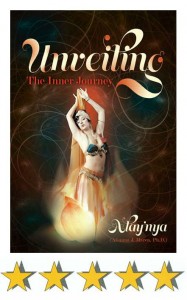The Hierophant Archetype – A Way of Life, Not a Jungian Psychological Type
Last night, I was talking with my dear friend Artie. Somehow, the conversation swung around to Jungian Psychological Types, as expressed by the Myers-Briggs Type Inventory (MBTI). “I used to be an ENFJ,” he said, “but now I’m much more an ENFP.” He’s right, but his comment brought a great insight to me on the relationship between our archetypal modes (Magician, Emperor, Hierophant, etc.) and our “Types” – usually denoted by the MBTI Type-coding such as “ENFJ.”
This is important. Artie really has made a shift, over the years. When he was in his corporate career, he really was an ENFJ. His life and his world encompassed the three major masculine archetypes; Magician (NTJ), Emperor (STJ), and Hierophant (NFJ). (Artie was and still is an Extrovert, making him ENTJ, ESTJ, and ENFJ as he expressed each of those modes.) During his professional career, he really did have excitement, energy, and enthusiasm for each of these modes. He led teams that devised new technical approaches, several different times (Magician). He was effective as a team leader and as a project manager, getting projects funded and successfully accomplished, and leading performance demos and reviews for his clients. (All Emperor-related tasks.) And don’t get me wrong, he loved each of these roles.
But what was the underlying base for his being? The “river” that flowed consistently through his personailty? It was always his Hierophant mode. He was, and still is, a born teacher.
During the earlier stages of his career, he expressed this as a lot of “career coaching.” He also brought together interesting people, and created environments in which they flourished.
In all of these situations, Artie was still dominantly “Judging,” or “J.” That is, in all of his career roles, he was driven to “come to closure.” He may have been coaching a junior member of the team, but the focus (for example) would have been on “how to put together a Powerpoint presentation that will wow the client.”
Now, retired from corporate life, Artie is still a Hierophant. He is still a coach/guide/guru. But he is a lot more open-ended about this.
In part, this is because his life is structured differently. In retirement-mode, without the stringent performance demands of today’s corporate world, he is able to shift into being more “Perceiving” (open-ended) than “Judging” (coming-to-closure). In a broader sense, he is also more separate from our overall cultural zeitgeist that is very performance-driven, and which tends to demand “Judging” behaviors from us, from childhood on.
In part also, Artie’s shift is due to the kinds of people with whom he interacts. He does a great deal of what I’ll loosely call “service work.” He spends a lot of time just talking with people; being the “wise old man” with whom they can consult as they work out life issues. The people who seek him out the most are themselves a bit more “open-ended” in how they approach life – or at least they are in this mode when they seek out Artie.
So Artie is probably right. He has indeed shifted from being dominantly ENFJ to being ENFP. But according to our archetypal mode system, the NFP “mode” is what we call Hathor – playful and pleasure-seeking.
So is Artie dominantly in Hathor mode now? Becuase he has shifted from “closure” to “open-ended,” does that shift his fundamental orientation – that of being a teacher – to being more of a pleasure-seeker?
Heavens, no!
Again, don’t get me wrong on this. Artie would be the last one on earth to decline a good dose of pleasure and fun. He may even be more able to enjoy the “pleasurable” aspects of life more now than when he was younger. But at the same time, his fundamental orientation towards life – that which gives him meaning and purpose – that which helps him “define himself for himself” – that which gets him up and going in the morning – is not about “pleasure.” Or at least, not about “pleasure” per se. It is about teaching. It is about connecting. It is about making a difference in the lives of the people who come to him.
His shift from “J” to “P” reflects a shift in the way in which he goes about being a Hierophant, but not the fact that – in his absolute core – he is a Hierophant.
But more on how this “shift” is expressed in a later blogpost.


